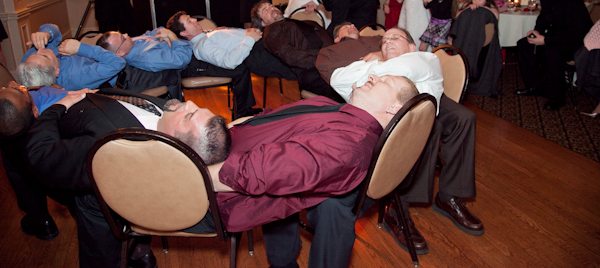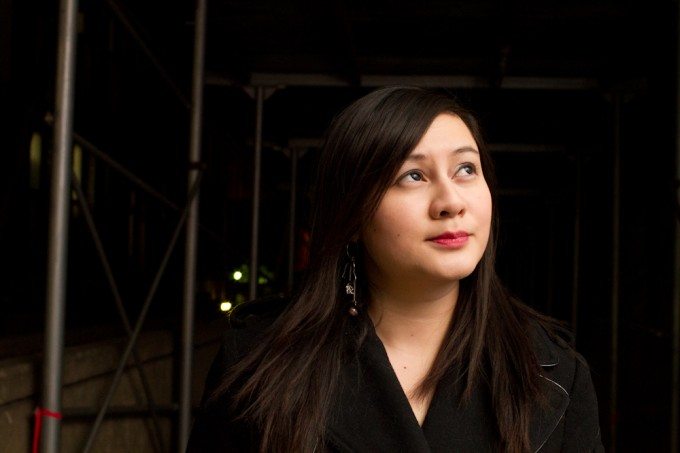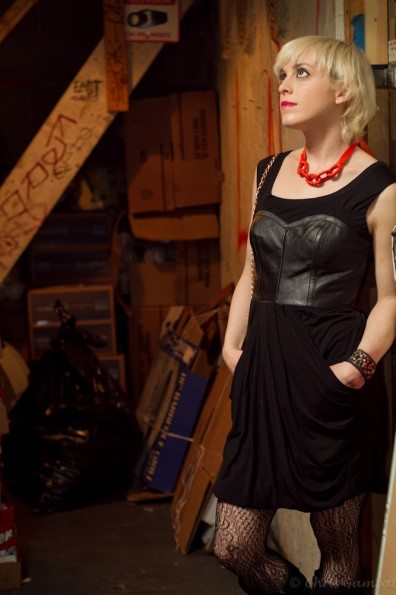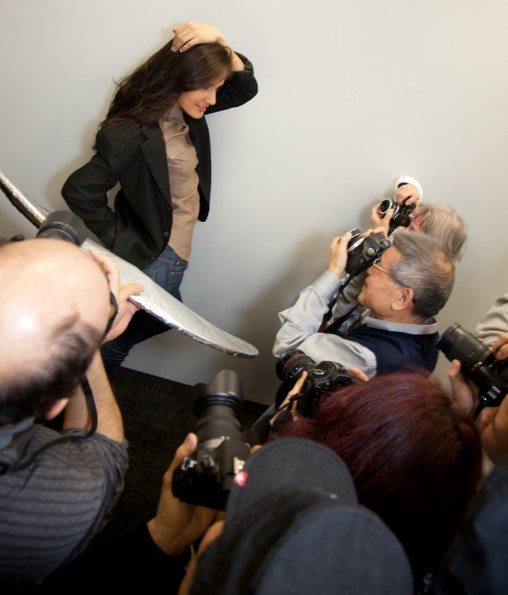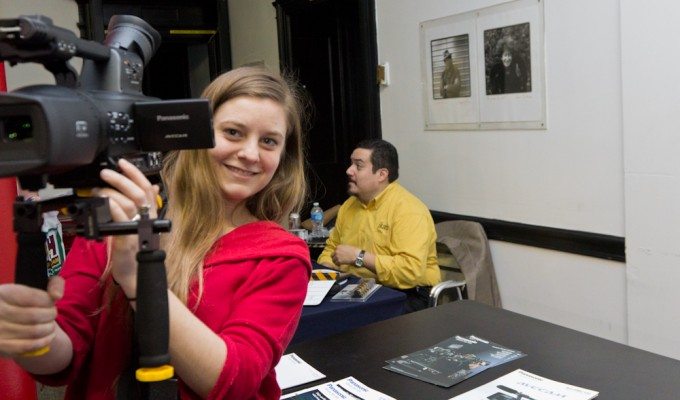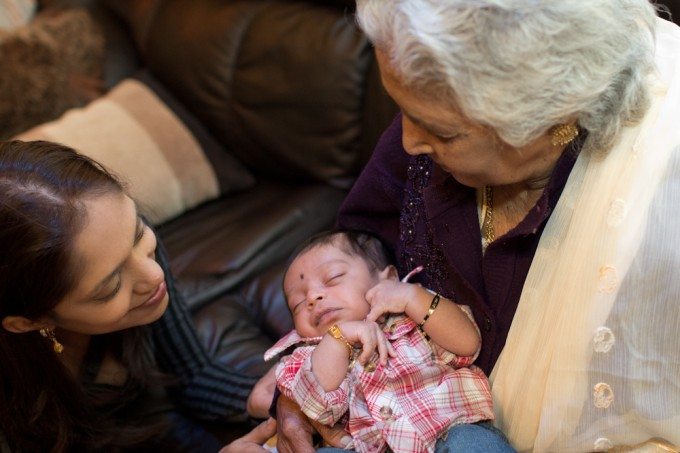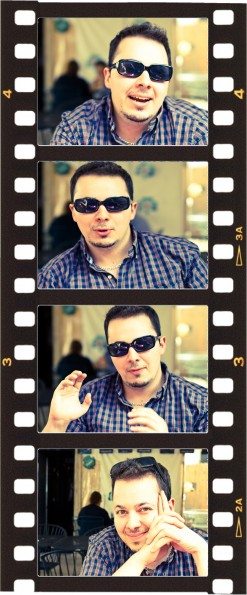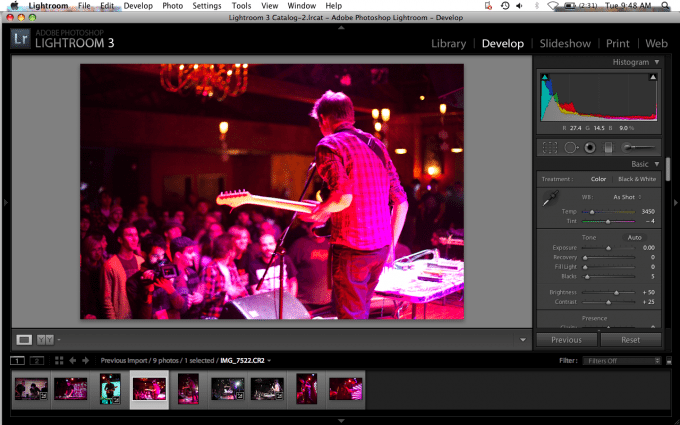You’ve got your DSLR, a fast lens, and maybe a flash or two. You’ve shot an event or two, but you want to shoot better photos. Here are a couple of tips to keep in mind to ensure that your client and the guests will be wowed.
Don’t Keep Your Flash Head Tilted Straight Up
I’ve seen numerous wedding and event photographers do nothing else but keep their flash heads pointed up towards the ceiling with their bounce cards up. Don’t fall into this habit. Instead, utilize the ceiling, walls and flash modifiers to your advantage by keeping in mind some basic portraiture techniques:
Ceiling: Shooting a photo of people in front of you and facing the camera? If you shoot the photo with the flash head pointing upward, you’ll have shadows under their eyes. If you aim the flash head up and a bit behind you, then you’ll be able to fill in some of those shadows on their face. The reason for this is because of the way that the light is being bounced.
Walls: Walls are the most under utilized available bounce flash area I’ve ever seen but once you start using them you’ll become addicted. If you’re close to a wall and shooting outwards at a dance floor or at a seating arrangement, aim your flash head towards the wall. It will be able to provide a lot of bounced light with less light loss than as opposed to the ceiling. When you shoot towards the ceiling, the area larger and further away which means that you’ll be losing effective flash output (light loss). With a wall right by you, the bounced surface is closer to you and chances are that the subjects are too. Because of this, you can save your flash’s battery power to adequately illuminate your subjects.
Flash Modifiers: Perhaps my favorite technique is using flash modifiers. Flash modifiers take the light from your strobe and shape it in different ways for different purposes. You can learn more about these in the following links (and recommended items):
Gary Fong Lightsphere Collapsible
Meter For More Than One Area
There are lots of photographers that don’t know how to meter for more than one area of a photo and instead just leave the metering on full evaluative. In scenes with lots of contrast (bright lighting and darkness/shadows) it is a great idea to meter for more than one area. Here’s my method:
– Focus on one area and meter for it accordingly to what your camera’s light meter says.
– Physically move your camera so that that point is over a contrasting area (such as shadows or highlights)
– Based on that reading, figure out a middle ground: it may be over-exposing a stop or it may be under exposing 1/3rd of a stop.
– Shoot the photo.
For best results, turn on the highlight display warning and read your camera’s histogram. This will help you to create a more balanced image.
Use Fast Lenses (F/2.8 and faster is recommended)
Fast lenses let you get the most out of your flash output. They also let you isolate certain subjects in your photos by using a very shallow depth of field (wide aperture). Beyond this, they are often sharper than the slower lenses.
If you’re still shooting with variable aperture zooms, it’s time to use them as doorstops. You’re better off getting something off of our Budget Lens list.
Set Up a Photo Booth
Photo booths are incredibly fun for the clients, guests and you! Just yourselves up with your subjects against a wall and have your subjects let loose and go crazy. In post-production, stitch the photos together in the way I’ve shown above.
A Screw-Up In Camera Can Be Saved In Post-Production
While you can try to get everything correct in the camera, you need to remember that your photo still isn’t developed. You need to take it into the post-production software of your choice and work on it to make it better.
I look at each and every photo I shoot as its own little art project: and I constantly tweak each photo to try to make it better. With digital photography, this process can be nearly endless and you can make your photos look much better than the original exposure that you shot in-camera.
If you’re sitting there reading this and saying, “But that’s not true to life…”
So what? You’re only placing boundaries on yourself and hurting yourself by not allowing yourself the chance to create a better photo. So get in there and edit!
Please Support The Phoblographer
We love to bring you guys the latest and greatest news and gear related stuff. However, we can’t keep doing that unless we have your continued support. If you would like to purchase any of the items mentioned, please do so by clicking our links first and then purchasing the items as we then get a small portion of the sale to help run the website.


